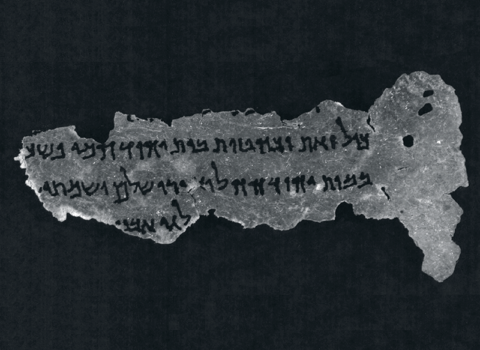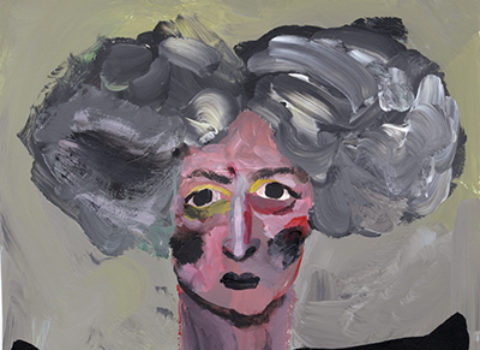From conversations between Madeleine Schwartz, a journalist, and members of the Abortion Counseling Service of Women’s Liberation, later known as Jane, an underground railroad for reproductive care that was started in Chicago in 1969. According to The Story of Jane, by Laura Kaplan, the service provided 11,000 abortions before it was shut down in 1973.
heather booth: In 1965, I was a college student at the University of Chicago. My friend’s sister was pregnant and not prepared to have a child. She was nearly suicidal, didn’t know what to do. My friend asked if I could help.
I turned to the Medical Committee for Human Rights, which was the medical arm of the civil-rights movement, and was directed to Dr. T.R.M. Howard. I called him up and discussed the situation. My friend’s sister was treated. It worked out well. I didn’t think about it again. Then someone else called. Word must have spread. I made the next arrangement too. And then someone else called. At that point I realized, well, there really must be a problem. So I called Dr. Howard and set up a system. I was living in a dormitory, so I told people to call and ask for Jane.
I asked Dr. Howard for detailed descriptions of what was involved, how the procedure went — I had never had the experience myself — what I should do to advise the women in advance, what I should do as a follow-up, what signs I should look for, if there was trouble that might develop.
That went on until 1968, when I got pregnant with my first child and realized that I needed to recruit other people to take on the work. I would go to political meetings and at the end I would say, “If anyone wants to work on this issue and provide counseling for women, come see me.” I recruited a number of women and trained them in the process I had set up for the counseling. I turned it over to them and they became “Jane.”
laura kaplan: We are often called a collective. But we weren’t really a collective. The group was organized as a series of concentric circles: the closer you were to the center, the more you knew, the more responsibility you had.
jeanne galatzer-levy: Everybody counseled. It was the backbone of the service.
judith arcana: When I started, I was assigned to an experienced Jane and sat with her through a couple of counseling sessions.
galatzer-levy: We had an ad in various little underground newspapers that said, “Pregnant? Worried? Call Jane.”
arcana: I became the person who would pick up the phone messages and call women back and ask them crucial medical questions. We kept all their information on index cards.
galatzer-levy: We met every two weeks or so. We rotated through people’s apartments.
kaplan: We always had lots of food at meetings. There was a social quality to it.
galatzer-levy: You would sit on the floor or on chairs, if there were chairs. There generally weren’t enough. When I was in the group, at its height, there were about thirty women. We would pass around index cards with information on them about the women seeking abortions.
arcana: Some of them had terrible stories. There was a fifteen-year-old, for example, who had been raped and was in her second trimester.
galatzer-levy: You’d usually set up an evening appointment. You’d give everybody a cup of tea, talk for a half hour or so. We would explain exactly what the procedure was, how it worked, what the instruments were that would be used, and what they could expect.
arcana: People would come to what we called the Front and then be taken from there to what we called the Place, where the procedure would be performed.
galatzer-levy: I worked the Front a good deal. We’d give people an address, and there would be someone there to greet them. We always had snacks — pretzels, cookies, coffee, tea, soda. People could bring a sister, brother, boyfriend. Sometimes they brought their kids. And the person at the Front would talk to them. Some of the women would be nervous.
arcana: We were working from people’s homes, usually an apartment. So if you were a friend of the service, but not a Jane, and if you were willing to let us use your place, you would take your cats or your kid and you would leave for eight or nine hours.
kaplan: One of the women in the group was in her forties, so to us she seemed much older — we were mostly in our twenties and early thirties. She lived in a Frank Lloyd Wright house in Oak Park. We loved that.
galatzer-levy: We had our own sheets, which were very pretty. We were into Marimekko. We wanted it to be comfortable and not feel like a medical setting.
booth: Dr. Howard died when I was still involved. I found another person. He was doing the procedures in a northwestern suburb.
arcana: When I met him at the end of ’70 or ’71, he had already, under pressure from the Janes, sacrificed his original m.o., which was to blindfold women throughout the procedure. He didn’t wish to be recognized.
With abortionists, these guys either had to pay off the mob or hide from the mob. Our guy was in that latter category.
galatzer-levy: He and one of the women became quite close, and she discovered that he wasn’t a doctor. In fact, somebody had just trained him to do the procedure.
arcana: I had heard that he learned when he was in the medical corps in the Korean War. That was the going tale.
galatzer-levy: She thought, “Well, if he can do it, I can do it.” And she talked him into training her. And then she trained a different woman. And then they stopped using him.
kaplan: There was a point — nobody remembers exactly what happened — when someone decided to let the group at large know that he wasn’t a doctor. Of course, once she did, people flipped out. Women were crying and saying, “We’re just like the back alleys. We have to fold!”
Calmer heads prevailed and people said, “We’ve been using this guy for a year and a half. We only get the most fabulous feedback from ob-gyns who see the women for post-abortion exams. So clearly you don’t have to be a doctor to do this.” At that meeting one woman said, “If he can do it and he’s not a doctor, then we can do it, too.”
galatzer-levy: You were gradually trained. There was an assistant and an abortionist. The assistant would sit next to the woman and hold her hand if she wanted us to, which she often did. We talked to them. We would be at their head while the person who actually did the abortion finished it up. Sometimes people would squeeze your hand so hard — you’d be amazed. You were there to talk to them and get them through it. It’s not a particularly pleasant procedure, but it’s not particularly long either. And it was — I know this sounds weird — but it was quite festive.
kaplan: I don’t think you can underplay the sense of personal power that the members of Jane felt. We were doing something so radical, breaking so many taboos, and changing women’s lives as a result.
galatzer-levy: Most political work is very, very slow. You have to keep telling yourself that things will get better. It’s one step forward and half a step back. This was not like that. We could just do it. There was a problem and we could solve it.
arcana: Of course, we recommended to all the women that if they got a fever, if they had any unusual bleeding, if anything happened, if they had a doctor they trusted, go deal with that doc. If not, we had a backup. There were a few guys who knew they might get a call from a Jane.
kaplan: We were all annoyed at the medical profession for not being more willing to help. We’d ask women how they heard about us. And if we got a particular doctor’s name from a few of them, one of us would call that doctor up and say, “Hi, this is Jane, you’ve been referring women to us and we wanted to talk to you about how you can help us.” Nine times out of ten they would say, “Don’t ever call me again.”
booth: Once there was a police raid at one of the homes. Seven women were arrested, but no one would testify against them.
galatzer-levy: I was working that day. One of the women in the service had come by the Front to check on something. It was one of those apartments with a long hallway. Everybody was in the back and there were a lot of kids that day, which made it fairly chaotic. The woman who had visited the apartment had just left when I heard a knock at the door. I thought she was coming back, that she had forgotten her scarf or whatever. So I walked back to the door. There were two homicide detectives. They were enormous — these two really tall men. I’m five feet two inches.
I looked at them. I turned around. I walked in front of them into the living room and said to everyone, “These are the police, you do not have to say anything.” The police were angry about that and I was arrested. We were smart enough to know that you don’t have to talk to the police and that policemen are not your friends.
We were arrested in May 1972. The Supreme Court decision came down in January 1973. Everybody knew that the Supreme Court was debating the case. It was then a question of waiting to hear the verdict.
After the Roe decision, the courts cut a deal with us that if we didn’t ask for our instruments back — they had grabbed all the stuff — they would not charge us for practicing medicine without a license. We said okay — we didn’t need the instruments anymore — and that was it.
kaplan: The first clinics opened in early spring. A few months later, we had a party. Everybody who had been involved was invited. The guy who wasn’t a doctor — he was there. All of us were there. By then we were fed up with one another. I think we were mostly burned out and happy to step back from the project. So we had our end-of-Jane party. And we all went our separate ways.









































































































